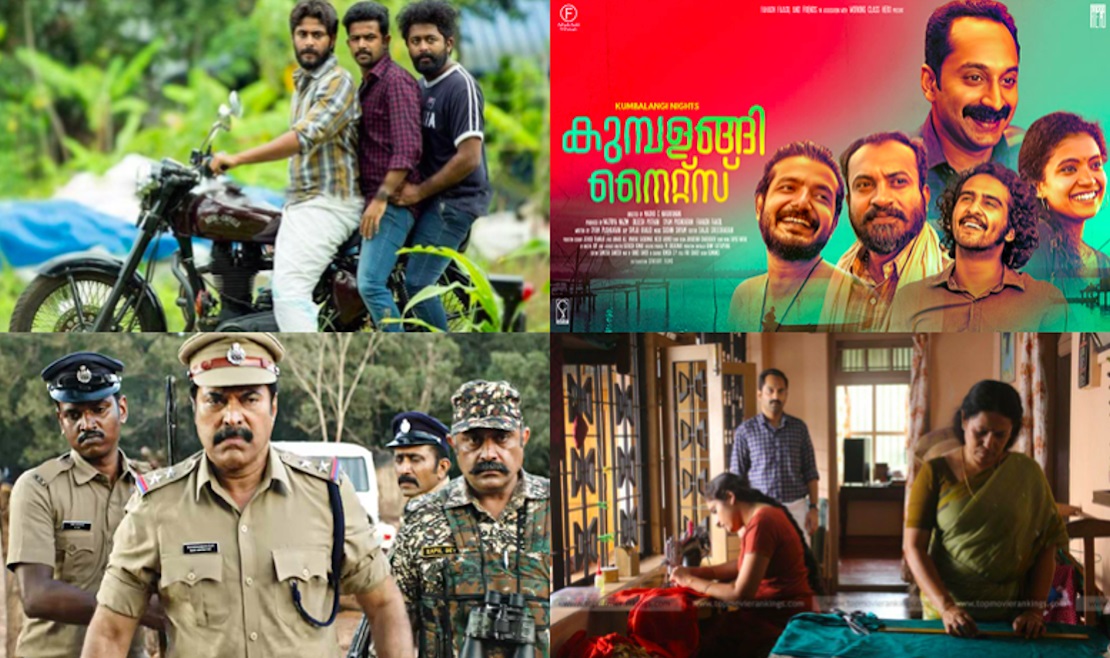


By Gautam Jain, Anurag Singh
Outside South India, films from the four South Indian languages are often clubbed and seen as a generic entity labelled ‘South Indian movies’. It is not uncommon to hear a Hindi film with loud characters or over-the-top action scenes being termed as a “South type ki picture”. But with increasing exposure to South Indian film content through streaming platforms, the four languages are beginning to build their individual identities. This emerging trend prompted us to explore how similar or different film content is, in these four languages.
We analysed Top 50 films in each of the four languages in the 2017-19 period, based on their box office collections. The analysis looked at various content attributes of these films. A clear pattern emerged across these attributes: Malayalam cinema stood out as being different from the other three languages, while Tamil and Telugu were strikingly similar, closely followed by Kannada. Let’s dive into the details.
Realistic treatment
This attribute classifies films as realistic vs. larger-than-life, based on their treatment. The chart below shows language-wise share of realistic films.

Almost 3 out of 4 Malayalam films have a treatment style that’s realistic. The proportion is only about 1 out of 3 for the other three South languages. With realistic films ranging from Angamaly Dairies that features all newcomers, to Fahad Fasil’s Kumbalangi Nights, to Unda headlined by superstar Mammootty, it’s evident that realism in Malayalam cinema is not driven by limitations related to star power or budgets.
A related analysis revealed that conflicts in Malayalam films are often about personal struggles and dilemmas of the common man or woman, or are about the underdog taking on the powerful. Only 16% Malayalam films featured a ‘powerful vs. powerful’ conflict, while this proportion is 30% for the other three languages.

More than 50% films in Tamil, Telugu and Kannada featured over-the-top action scenes, compared to only 32% in Malayalam cinema. The absence of the macho hero archetype, and the presence of vulnerable, even grey, characters is more prevalent in Malayalam cinema, where many lead actors don’t mind playing real-life, everyday characters.
This reputation of Malayalam films being realistic and relatable dates back to 1970s, but lost ground over time, to be revived only over the last decade. New-age Malayalam films are set in humble settings, and highlight problems faced by ‘people-like-us’ protagonists, using lucid narratives that use emotions and comedy as engagement tools.
Regional identity & setting
In this attribute, we identified films that highlight the culture, language or identity of the state, evoking a sense of pride among the citizenry. 46% Malayalam films are centred around regional identity and culture, compared to 32% in Tamil & Telugu cinema, and only 8% in Kannada cinema. For example, Sudani From Nigeria showcases the region’s love for football. Regional pride shines through in Kayamkulam Kochunni, which is a film based on local folklore.

The settings in which Malayalam films are based also drive this connect. Almost 60% Tamil, Telugu & Kannada films are based in polished urban settings, including foreign countries. However, Malayalam cinema is a lot more rooted on this attribute, as seen in the chart below:

The storyteller’s love for the beauty of Kerala is evident in many such semi-rural or rural-based films, which showcase beautiful locations of the state, often integrating them seamlessly in the plot, so that the location becomes a character in its own right. Being a state with high literacy and a close-knit community of people united by language, Malayalam films thrive on local stories rooted in ordinary Malayalee life and issues.
While this could be true for other three South films industries as well, their evolution as industries differs from Malayalam cinema’s. Both Tamil & Telugu film industries have close connections with politics. As a result, the male protagonist has to be projected as a “hero”, an all-powerful saviour of the masses.
Tamil and Telugu films also have a wider overseas market while the overseas potential of Malayalam films is largely restricted to the Middle East. Additional revenue from Hindi dubbed satellite rights could also be a reason why larger-than-life themes have thrived in Tamil and Telugu cinema.
‘Humble’ protagonists
The difference between Malayalam and other three South film industries gets highlighted further if we look at the social status of the protagonists of films in each language, as depicted in the chart below.

The poor or middle class social status is particularly unique to Malayalam cinema, and this reflects in the attire of the protagonists being more traditional than modern. 56% of the Malayalam films analysed had the protagonist wearing traditional attires, compared to an average of only 29% in the other three languages combined.
This ‘simplicity’ is also reflected in how the protagonists are introduced in these films. Only 28% Malayalam films had a stylized, larger-than-life entry sequence for the protagonist. The number stands at much higher levels for Kannada (64%), Tamil (56%) and Telugu (44%) films, where an action scene is often the go-to entry sequence trope.
This seeming absence of ‘commercialization’ can be linked to how the industry is funded. With no major corporate studios backing them, Malayalam films are largely funded by individual producers and financiers. Many corporates have made their presence felt in Tamil and Telugu films, but this impact is not as significant for Malayalam films. Hence, the packaging of a film as a ‘star-centric’ one is not a major factor in the Malayalam film industry, where the focus is more into writing, performances and technique instead.
Nothing formulaic about it
The difference between Malayalam and the other three languages continues on how formulaic elements like comedy tracks, songs and antagonists feature in them. Only 26% Malayalam films have a running comedy track. This number is nearly double at 47% in the other three industries put together, with Telugu at a staggering 58%.
An average Malayalam film has 4.1 songs, which is lower than the other three languages: Tamil (5.8), Telugu (5.3) and Kannada (5.1). 46% Malayalam films do not have a principal antagonist. This number is only 12% for Tamil, 36% for Kannada and 38% for Telugu films.
In conclusion, though all industries make movies that are unique in their own ways, with their respective cultural and socio-political nuances, Malayalam cinema stands out for its truthful representation of characters and conflicts. For reasons that may be commercial and cultural in equal part, the industry has picked substance over style, and content over celebrity.
So, the next time you see a hero pulverising his opponent in a filmy fight in a South dubbed movie on a Hindi movie channel, you can safely place your bets that it’s not a Malayalam film.

Introducing Ormax Media Affluence (OMA)
OMA is a new audience classification system designed specifically to measure affluence level of audiences in context of the media & entertainment sector in India

Ormax Cinematix's FBO: Accuracy update (December 2025)
This edition of our monthly blog summarises Ormax Cinematix's box office forecasts (FBO) for all major December 2025 releases vis-à-vis their actual box-office openings

The India Box Office Report: November 2025
November 2025 was an underwhelming month at the India Box Office, recording only ₹587 Cr in gross collections. However, the year stays on course to become the highest-grossing year of all time
Subscribe to stay updated with our latest insights
We use cookies to improve your experience on this site. To find out more, read our Privacy Policy